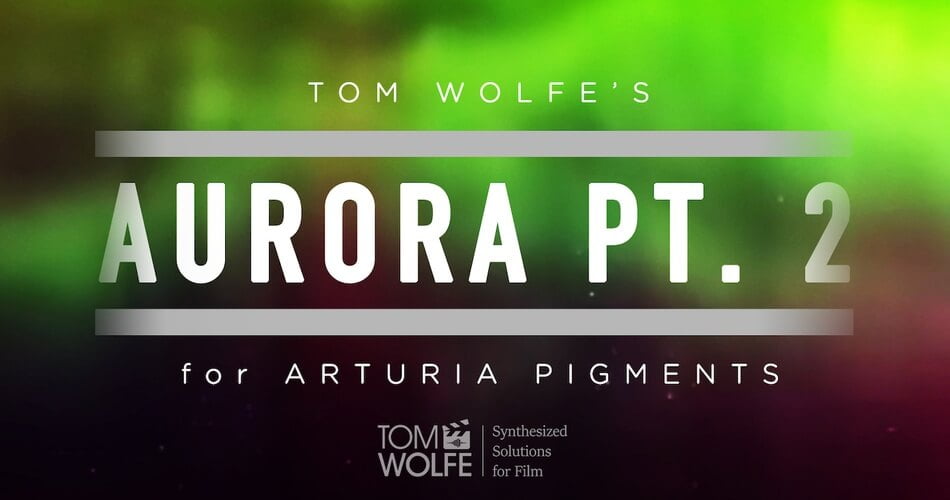

- #Arturia pigments presets have no extensions install
- #Arturia pigments presets have no extensions update
- #Arturia pigments presets have no extensions manual
- #Arturia pigments presets have no extensions Patch
- #Arturia pigments presets have no extensions full
That puts Unify in a totally different class than any other “Host” PlugIn: we include 6 Instrument and 40 effect plug-ins that John “Skippy” Lehmkuhl used to make the 625 patches that are included and play the second you install Unify. We talked to a number of small (like us) developers who have made some rather amazing free plug-ins in the last 20 years and received their blessing to include their plug-ins and audio effects – along with our own Guru Sample Player and 14 Effects we built ourselves so that Unify ships with 625 ready-to-play patches when you install it. One of the cool things with Unify is that any format of plug-in can load other formats of plug-ins – meaning the Audio Unit version can easily load VST3 and VST plug-ins while you’re using it in Logic Pro X (which doesn’t know what to do with VST or VST3 plug-ins). Unify includes plug-ins VST2, VST3 and Audio Units (Mac only) PLUS a Standalone application for PC and Mac.

Say hello to a NEW WAY of working with Plug-ins of all types! Unify can work with MIDI Effects, Instruments and Audio Effects in creative fun and inspiring ways.
#Arturia pigments presets have no extensions Patch
Listen to the audio demos, watch the patch and interface walk thru videos (as well as other support videos) and you will be inspired with what YOU can create after adding this amazing plug-in instrument to your toolkit!
#Arturia pigments presets have no extensions full
You can restart it again if you wish.Īnybody can now get the Full Installer or Updater files to download from either logging into your account or from our Distributer partner Ilio’s download links: Everything works (saving is disabled, it can’t load any of our libraries, just play select patches from our factory content and scan your plug-ins to confirm how cool it is to layer multiple plug-ins you own inside of Unify!) The demo version will quit after 15 min of use. We also offer a FREE DEMO VERSION of Unify so you can try before buying if you wish. Please scroll down the page to see the list of all the libraries available for Unify–
#Arturia pigments presets have no extensions manual
Online manual if you wish to read details about all things Unify So i think this puts a wrap to the question of CPU usage of Pigments – It’s average.Unify Change Log with details on what was updated in 1.8.2 Beta And in fact Batt said something to the effect that he saw the CPU usage on Pigments to being equivalent to most other software synths. They were still very much in a usable range. Watching Nick Batt’s new preview video of Pigments, it showed CPU usage on Batt’s laptop, being slightly above the measurements i saw on my desktop system.
#Arturia pigments presets have no extensions update
The viewer also can help with the update process. The Viewer also shows the GPU you are using and other data. For the moment only i’m a few versions back with my driver, but this doesn’t seem a problem with Pigments. I don’t see much reason for me to do either test. (Unless there’s a bug in Pigments that makes it run much more inefficiently as a Plugin. But already knowing i have room there makes this less interesting to me at the moment. I suppose more tests could be to compare Pigment head to head with another software synth also running standalone, like UVI Falcon, or Steinberg Halion 6 – comparing apples to apples.Īnother possible test would be to run Pigments as a VST over top of a DAW like Live or something. My system has lots of performance headroom over top of what i’ve seen already. (You can think of it like an audio compressor, which means you have further to go before you get to hard clipping.) The processor just works harder to compensate to the increased demand. Given that the CPU clock speed increases with demand means that the correspondence here will not be linear. I do have a fairly good GPU, with its OpenGL, which may be part of the explanation for this. From this i’ve concluded that very little of the CPU usage on my system is due to display routines.

I do see a dramatic difference between making both engines analog versus making them both wavetable. (I’ve got a i7 3.4 GHz, with 4 cores and max memory. And this is an extreme, in typical use, demand is at less than half this.

I doubt this is even enough to be pushing the CPU to speed up it’s clock, it’s barely above idle. (Too bad there’s not a numeric percentage displayed there.) But this only shows a 9.3% usage for the Pigment application with the Windows System Manager. I got the meter on the front of Pigments all the way up to almost 25%. Definitely could push up CPU demand by making both engines wavetable, with plenty of effects and tons of notes.


 0 kommentar(er)
0 kommentar(er)
